Abstract
The ability of antisera to lipid A, induced in rabbits by immunization with lipid A complexed to various carriers, to protect mice against gram-negative infection and to inhibit the fluid loss caused by an enteropathogenic strain of Escherichia coli in the piglet ligated gut was investigated. No significant protection was obtained in either case, although passive hemolysis and quantitative precipitation tests showed the presence of antilipid A antibodies in the sera. Fluorescent antibody studies suggest that the lipid A is in a cryptic position on the surface of smooth strains of gram-negative bacteria.
Full text
PDF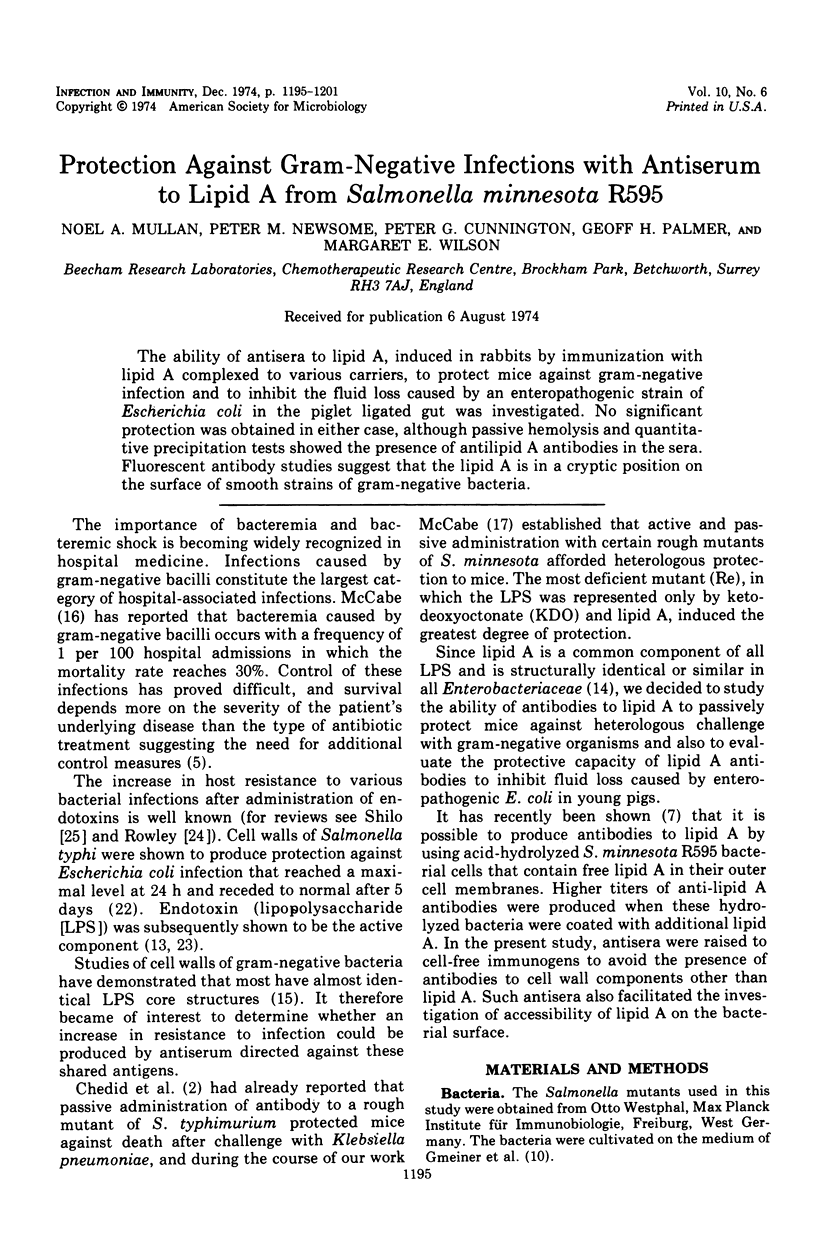
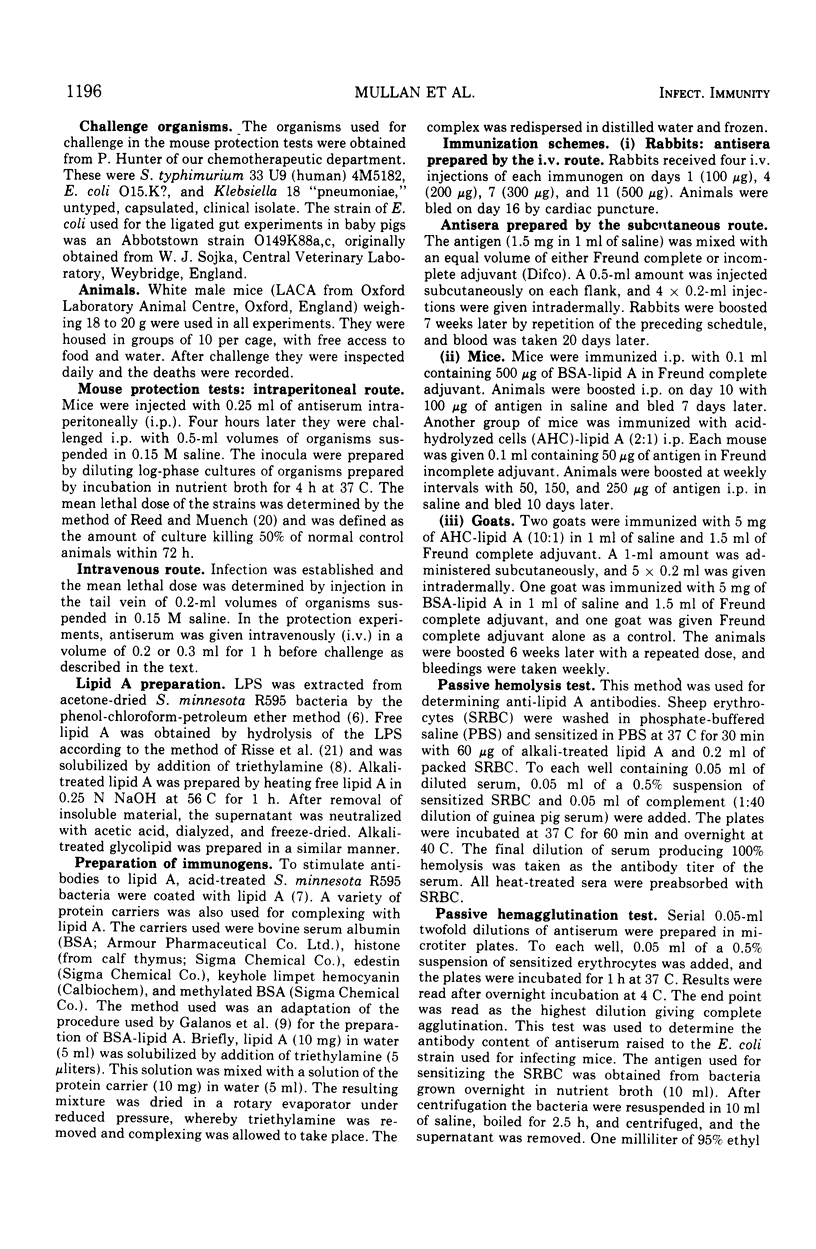
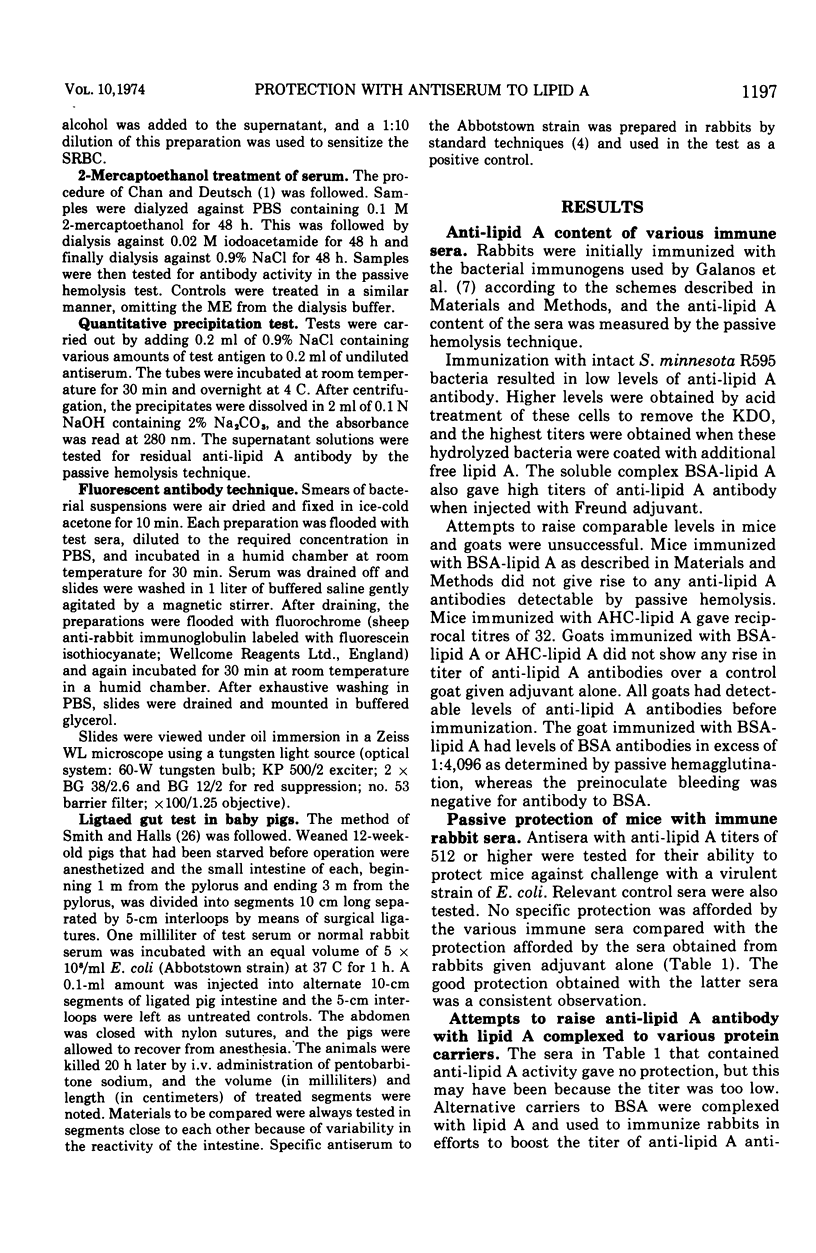
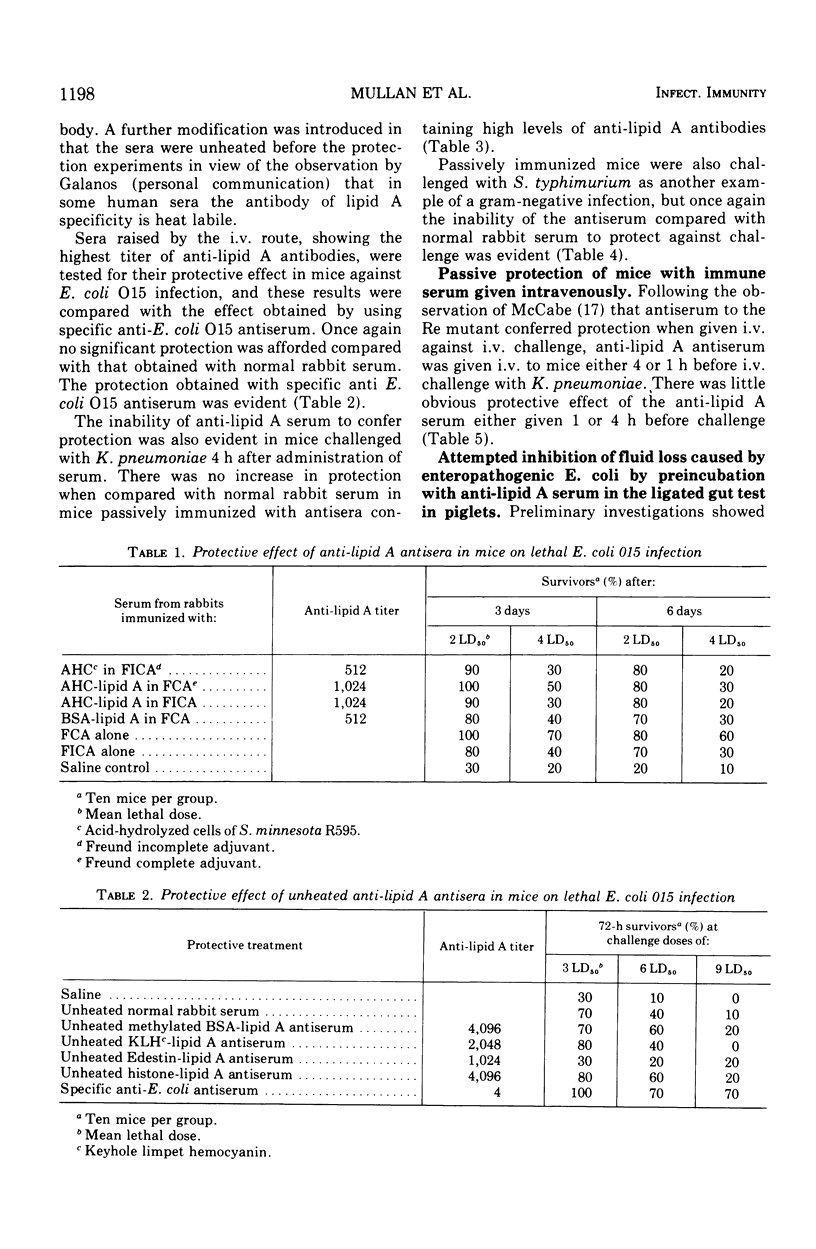
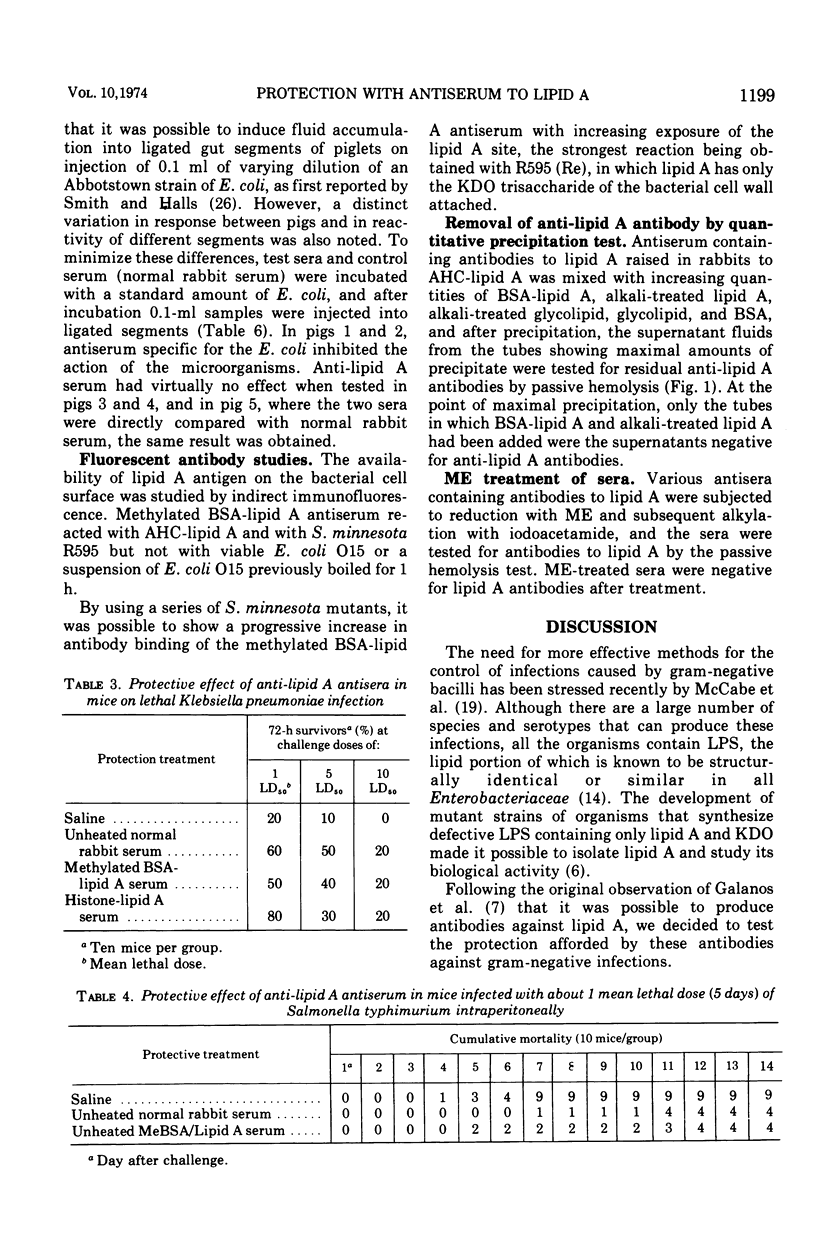
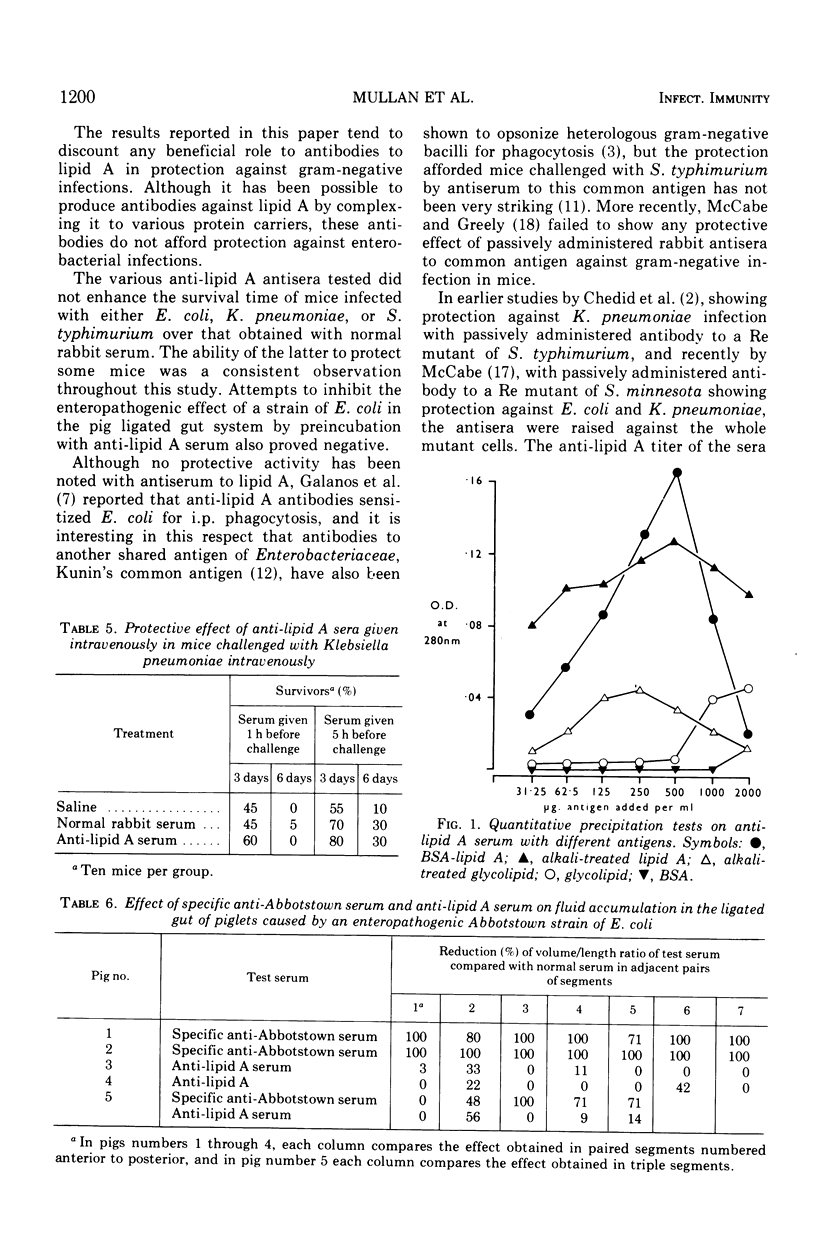
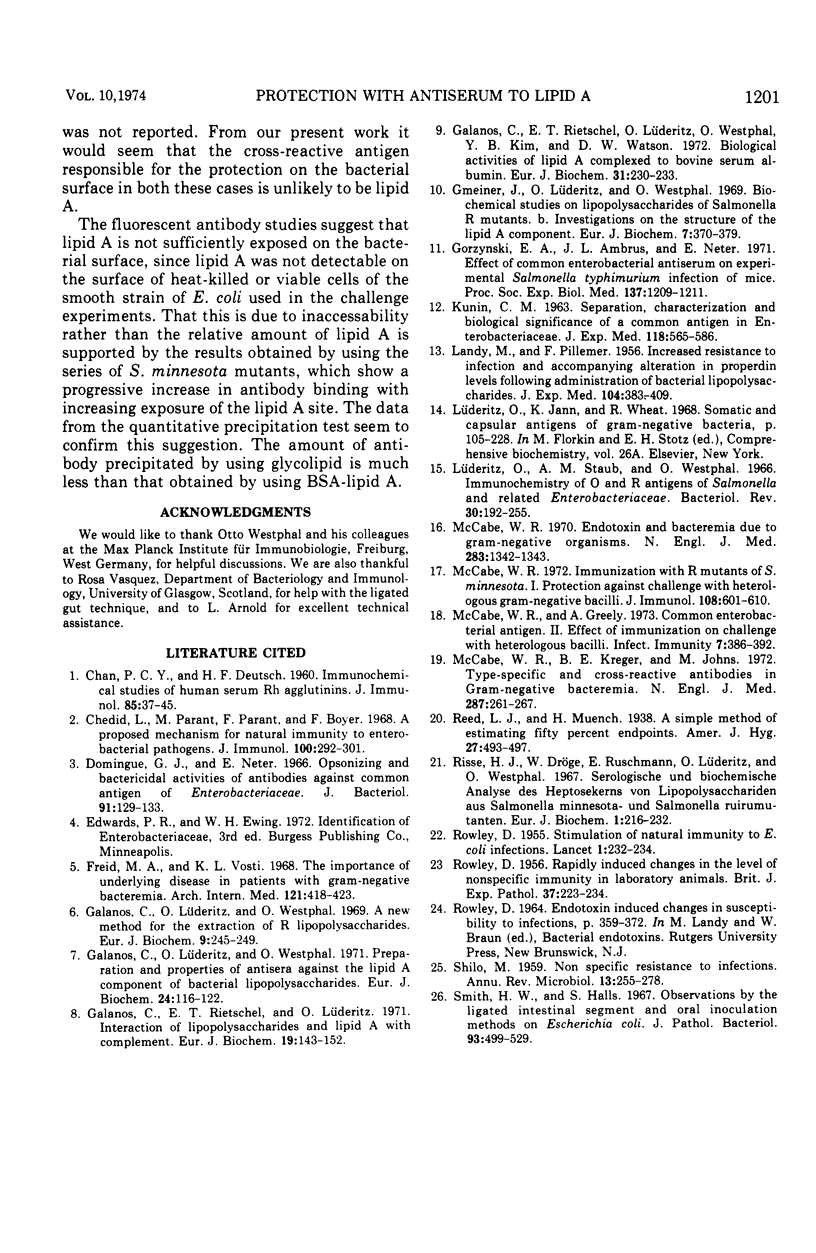
Selected References
These references are in PubMed. This may not be the complete list of references from this article.
- CHAN P. C., DEUTSCH H. F. Immunochemical studies of human serum Rh agglutinins. J Immunol. 1960 Jul;85:37–45. [PubMed] [Google Scholar]
- Chedid L., Parant M., Parant F., Boyer F. A proposed mechanism for natural immunity to enterobacterial pathogens. J Immunol. 1968 Feb;100(2):292–306. [PubMed] [Google Scholar]
- Domingue G. J., Neter E. Opsonizing and bactericidal activity of antibodies against common antigen of Enterobacteriaceae. J Bacteriol. 1966 Jan;91(1):129–133. doi: 10.1128/jb.91.1.129-133.1966. [DOI] [PMC free article] [PubMed] [Google Scholar]
- Freid M. A., Vosti K. L. The importance of underlying disease in patients with gram-negative bacteremia. Arch Intern Med. 1968 May;121(5):418–423. [PubMed] [Google Scholar]
- Galanos C., Lüderitz O., Westphal O. A new method for the extraction of R lipopolysaccharides. Eur J Biochem. 1969 Jun;9(2):245–249. doi: 10.1111/j.1432-1033.1969.tb00601.x. [DOI] [PubMed] [Google Scholar]
- Galanos C., Lüderitz O., Westphal O. Preparation and properties of antisera against the lipid-A component of bacterial lipopolysaccharides. Eur J Biochem. 1971 Dec 22;24(1):116–122. doi: 10.1111/j.1432-1033.1971.tb19661.x. [DOI] [PubMed] [Google Scholar]
- Galanos C., Rietschel E. T., Lüderitz O., Westphal O. Interaction of lipopolysaccharides and lipid A with complement. Eur J Biochem. 1971 Mar 1;19(1):143–152. doi: 10.1111/j.1432-1033.1971.tb01298.x. [DOI] [PubMed] [Google Scholar]
- Galanos C., Rietschel E. T., Lüderitz O., Westphal O., Kim Y. B., Watson D. W. Biological activities of lipid A complexed with bovine-serum albumin. Eur J Biochem. 1972 Dec 4;31(2):230–233. doi: 10.1111/j.1432-1033.1972.tb02524.x. [DOI] [PubMed] [Google Scholar]
- Gmeiner J., Lüderitz O., Westphal O. Biochemical studies on lipopolysaccharides of Salmonella R mutants. 6. Investigations on the structure of the lipid A component. Eur J Biochem. 1969 Jan;7(3):370–379. doi: 10.1111/j.1432-1033.1969.tb19618.x. [DOI] [PubMed] [Google Scholar]
- Gorzynski E. A., Ambrus J. L., Neter E. Effect of common enterobacterial antiserum on experimental Salmonella typhimurium infection of mice. Proc Soc Exp Biol Med. 1971 Sep;137(4):1209–1212. doi: 10.3181/00379727-137-35757. [DOI] [PubMed] [Google Scholar]
- KUNIN C. M. SEPARATION, CHARACTERIZATION, AND BIOLOGICAL SIGNIFICANCE OF A COMMON ANTIGEN IN ENTEROBACTERIACEAE. J Exp Med. 1963 Oct 1;118:565–586. doi: 10.1084/jem.118.4.565. [DOI] [PMC free article] [PubMed] [Google Scholar]
- LANDY M., PILLEMER L. Increased resistance to infection and accompanying alteration in properidin levels following administration of bacterial lipopolysaccharides. J Exp Med. 1956 Sep 1;104(3):383–409. doi: 10.1084/jem.104.3.383. [DOI] [PMC free article] [PubMed] [Google Scholar]
- Lüderitz O., Staub A. M., Westphal O. Immunochemistry of O and R antigens of Salmonella and related Enterobacteriaceae. Bacteriol Rev. 1966 Mar;30(1):192–255. doi: 10.1128/br.30.1.192-255.1966. [DOI] [PMC free article] [PubMed] [Google Scholar]
- McCabe W. R. Endotoxin and bacteremia due to gram-negative organisms. N Engl J Med. 1970 Dec 10;283(24):1342–1343. doi: 10.1056/NEJM197012102832412. [DOI] [PubMed] [Google Scholar]
- McCabe W. R., Greely A. Common enterobacterial antigen. II. Effect of immunization on challenge with heterologous bacilli. Infect Immun. 1973 Mar;7(3):386–392. doi: 10.1128/iai.7.3.386-392.1973. [DOI] [PMC free article] [PubMed] [Google Scholar]
- McCabe W. R. Immunization with R mutants of S. Minnesota. I. Protection against challenge with heterologous gram-negative bacilli. J Immunol. 1972 Mar;108(3):601–610. [PubMed] [Google Scholar]
- McCabe W. R., Kreger B. E., Johns M. Type-specific and cross-reactive antibodies in gram-negative bacteremia. N Engl J Med. 1972 Aug 10;287(6):261–267. doi: 10.1056/NEJM197208102870601. [DOI] [PubMed] [Google Scholar]
- ROWLEY D. Rapidly induced changes in the level of non-specific immunity in laboratory animals. Br J Exp Pathol. 1956 Jun;37(3):223–234. [PMC free article] [PubMed] [Google Scholar]
- ROWLEY D. Stimulation of natural immunity to Escherichia coli infection: observations on mice. Lancet. 1955 Jan 29;268(6857):232–234. doi: 10.1016/s0140-6736(55)90163-x. [DOI] [PubMed] [Google Scholar]
- Risse H. J., Dröge W., Ruschmann E., Lüderitz O., Westphal O., Schlosshardt J. Eine neue Gruppe von Salmonella R-Mutanten. Serologische und biochemische Analyse des Heptosekerns von Lipopolysacchariden aus Salmonella minnesota- und Salmonella ruiru-Mutanten. Eur J Biochem. 1967 Apr;1(2):216–232. doi: 10.1111/j.1432-1033.1967.tb00066.x. [DOI] [PubMed] [Google Scholar]
- Smith H. W., Halls S. Observations by the ligated intestinal segment and oral inoculation methods on Escherichia coli infections in pigs, calves, lambs and rabbits. J Pathol Bacteriol. 1967 Apr;93(2):499–529. doi: 10.1002/path.1700930211. [DOI] [PubMed] [Google Scholar]


